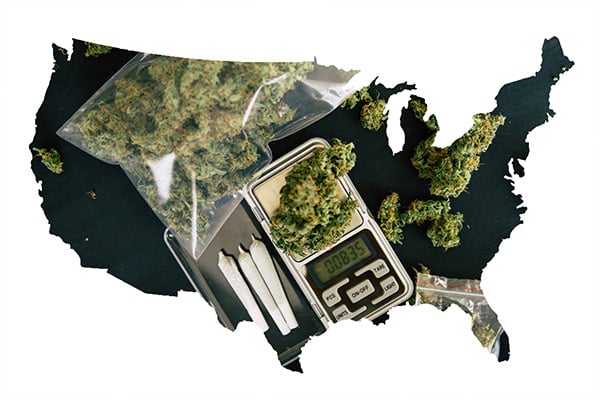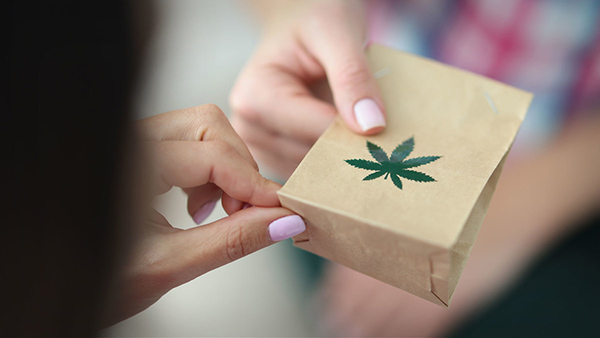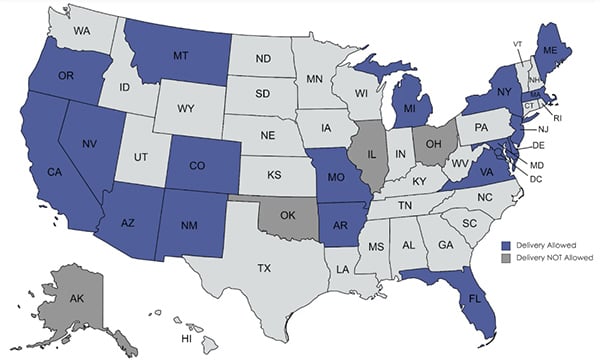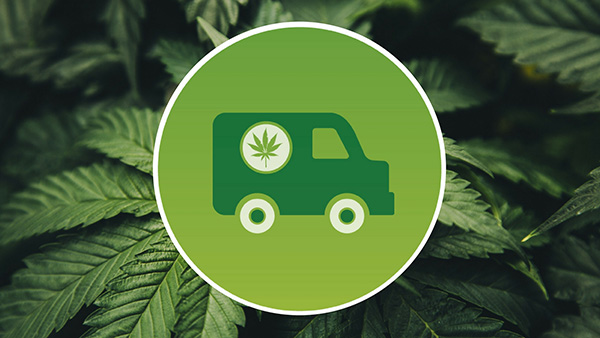How to start a marijuana distribution business in the U.S.

How to start a marijuana distribution business in the U.S.

Transporting marijuana is not like transporting food or flowers. There are strict rules and regulations that vary from market to market, operators must thoroughly research the laws in their region to find out what options are available to them. With so many rules and regulations, optimizing a workflow can be overwhelming, but we'll walk you through it with this article so you'll know what to expect.
Marijuana sales are only legal if they are tracked.
Therefore, tracking and reporting each driver is key to running a successful delivery operation. Maybe you already run a dispensary and want to expand your offerings to those unable to visit your location, but delivery hasn't been a cost-effective option in the past. Now that delivery is spreading across legal marijuana states, the opportunities for retailers are expanding.
Not surprisingly, marijuana deliveries increased by 25 percent during the peak of the pandemic in 2020. Since then, Cowen and Company have revealed a projection that legal marijuana sales will grow 20-30 percent annually starting in 2022 and potentially reach $50 billion in sales by 2026.
If you're thinking about getting into the delivery business, now is the time. Here's how to jump on the bandwagon and watch your sales grow.
Is cannabis delivery right for your dispensary?

To comply with all the legislation, you will need to be prepared to pay some hefty upfront costs.
You will need to pay for the following:
- A license or permit fee
- Compliance tools and packaging
- Consulting fee
- Delivery vans (some states allow drivers to use their private cars, and some even require the vehicles to have built-in GPS)
In the cannabis industry, even a small mistake can lead to huge fines.
Therefore, you also need diligent delivery staff and the right technology to comply with regulations.
In addition to your POS system and online menu, all states that allow the legal sale of cannabis require thorough use of state-approved seed sale tracking systems.
It works exactly as it sounds: it tracks every product from the plant's initial growth and cultivation to the consumer it ends up with.
The tracking system keeps every sale compliant, away from the black market, and ensures that purchase restrictions that may vary from state to state are not exceeded.
METRC (Marijuana Enforcement Tracking Reporting Compliance) is a popular seed sales tracking software that most states use to track each product through their SKUs (inventory number). METRC tracks reporting compliance on behalf of marijuana enforcement, and if you already operate a dispensary, you're probably already familiar with it.
You'll also need a software service like Onfleet, or another provider that provides last-mile tracking services. The reason is that because cannabis remains in a gray area of legality, state officials need to know where each package is going and when. Also, many states will require you to print a roadmap instruction that details every turn the vehicle takes to accompany your delivery list.
Delivery manifests are online forms used to track every sale from your POS to your state tracking system, such as METRC. In most states, not carrying paperwork or having customers sign at the door makes the sale non-compliant and raises red flags to regulators. You also don't want your driver to be pulled over without proper documentation. Some states track this digitally, so check your state's compliance rules when creating your delivery SOP (Standard Operating Procedure).
Here are a few examples of how regulations change from state to state:
- In Arizona, only medical marijuana patients are allowed to receive cannabis deliveries. Casual users have to go into a physical store. Drivers will need to verify the medical card through the original order mechanism (such as e-commerce solutions) and use their ID again at the door.
- In Oregon, purchase limits vary widely in the recreational and medical markets. Casual customers can only buy one ounce of cannabis per day, while medical patients can buy eight ounces per day. Make sure the right type of customer gets the right package size - fortunately, e-commerce and POS solutions can incorporate these parameters and keep your business safe.
- In Massachusetts, dispensaries can outsource to delivery companies, but they need to have two employees at each delivery and wear body cameras during delivery to ensure visibility. Given the nuances mentioned above, delivery is available in almost every legal state (see map), so it's still worth your time to know the rules when you're thinking about earning potential.

Now that you've seen the importance of understanding regulations by location, we can move on to discussing the different types and how they work.
Types of cannabis delivery models:

Pizza delivery model (single delivery): One delivery at a time, received and packaged at the pharmacy, displayed, and delivered directly to the customer.
Beehive delivery mode (bulk delivery): The same driver accepts multiple delivery orders in bulk but along a longer route that determines the order of each stop. We call this bulk delivery.
Ice Cream Truck Delivery Mode (Dynamic Delivery): Move inventory and a unique menu for each truck. The driver can accept, fulfill and deliver multiple orders in the field, just like an ice cream truck.
In some states, you must follow the pizza delivery model. This means that your driver can only carry one customer's order at a time. This can be time-consuming for drivers and less efficient for sales as drivers must return to the store between each delivery. The bulk delivery model works better when you can group routes by geography. This is similar to the pizza delivery model, but it moves more efficiently because the driver leaves the store with multiple orders. Also known as Dynamic delivery, the ice cream truck model is the most flexible but is currently only available in states like California and Michigan. This model is profitable for these states but comes with additional truck safety measures.
Enterprise operators may have to customize their delivery products by state. Keep in mind that marijuana is still illegal in the United States, so your operation cannot cross state lines or go through federal land.
If you are in one of the lucky, prosperous, vibrant markets, you may want to consider how to package your product for the best freshness. While marijuana products must leave the dispensary in child and tamper-proof packaging, they should still be sealed to prevent air from drying out buds or edibles.
Anything sealed airtight, like a glass jar, is a plus. Store the product in a cool, dry place at about 70 degrees. Too high a temperature can actually change the effectiveness of the plant, while too low a temperature can cause microbial growth on the product. Fresh stock usually means repeat customers, so make sure the storage on your truck meets these standards.
Larger operations require additional staff.
If you want to run larger-scale deliveries, you may need a dispatcher to assign orders to each driver, display listings in METRC, update orders, and handle any issues or communications.
Any retailer running a delivery larger than the pizza delivery model should consider hiring delivery drivers rather than taking salespeople off the floor. The driver will record the driving route on the checklist and follow it to the letter, complete the operating checklist, organize the payment and the corresponding paperwork, and bring it all back to the proper filing location at the dispensary.
Your driver should have a marijuana work permit and be trustworthy enough not to smoke on the road or engage in any behavior that could get them pulled over. While paperwork may protect you, it won't protect you from irresponsible employees. They should pay attention to time management and deliver products to customers in a reasonable time. These time frames should also match your checklist to ensure compliance. Average delivery times vary greatly depending on road conditions, traffic, route times, etc., so allow a wide arrival time range at the beginning. With more experience, you can shrink the window to be more efficient.
Consider marketing your delivery service using strategies such as targeted promotions by zip code to entice people nearby to buy frequently while continuing to expand your reach within regulatory boundaries.
Bulk delivery is currently the most promising option in most legal states. Leading software solutions means you can now easily plan routes, print multiple listings, and assign multiple orders to a single driver. Reduce the time you spend with our return checklist, built-in traceability, and insightful route data. If you have the scale and finance to diversify into cannabis delivery, it can skyrocket your earning potential as a dispensary.





